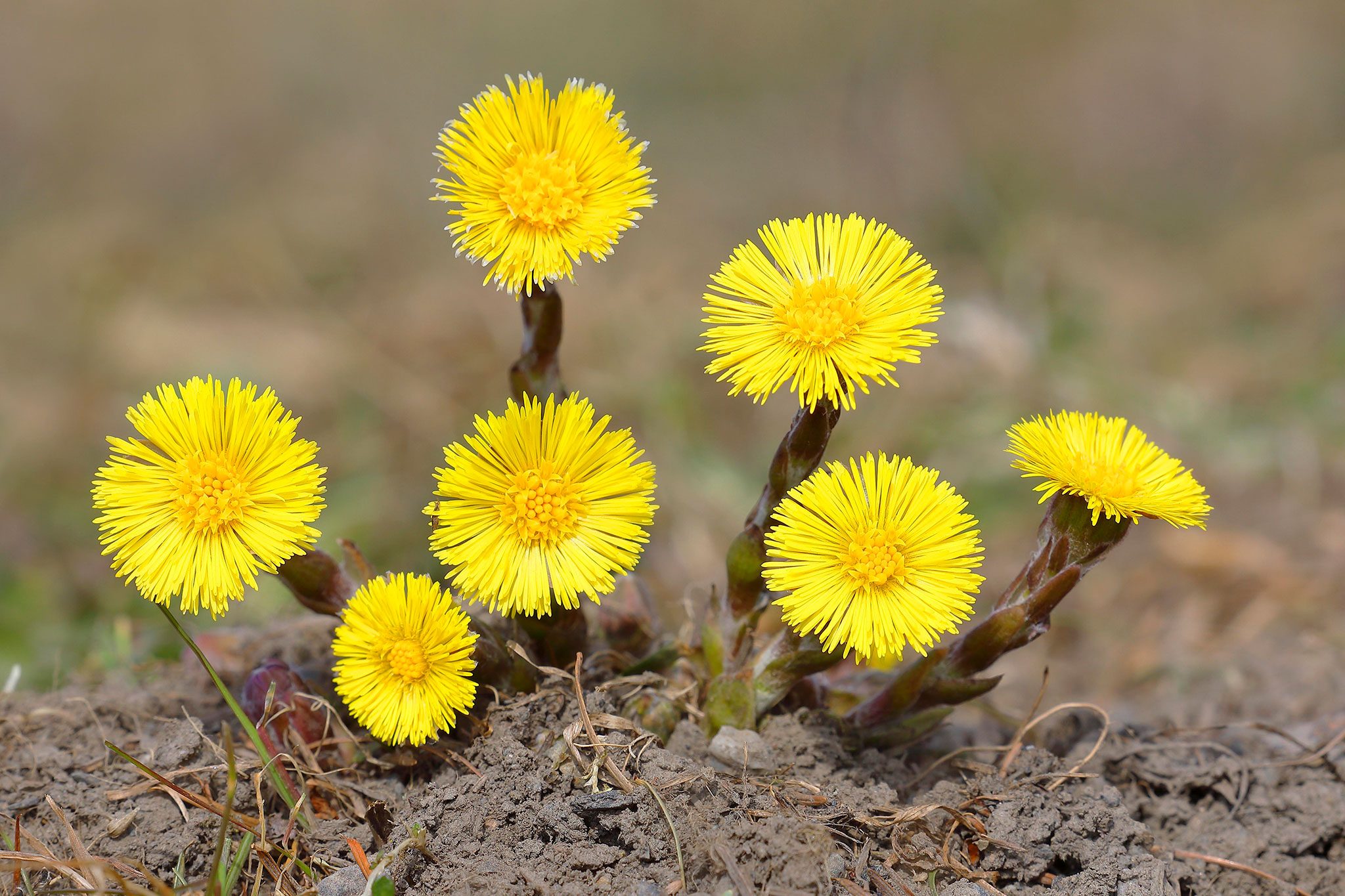Common Names:
-
Coltsfoot
-
Garo: Kothamari, Kulamari
-
Hindi: Watpan
Family: Sunflower family (Asteraceae)
Description:
Coltsfoot is a small, perennial herb that grows back every year. It spreads through seeds and underground stems called rhizomes.
-
The plant usually grows in groups of many plants together.
-
Its yellow flowers look like dandelions and bloom early in spring, even before dandelions appear.
-
The leaves, shaped a bit like a horse’s hoof (which is why it’s called Coltsfoot), only grow after the flowers have produced seeds.
-
Interestingly, the flowers grow without leaves, and later, when the leaves come out, they don’t produce flowers and wither away by the end of the season.
-
Coltsfoot usually grows between 10 to 30 cm tall.
Where It’s Found (Distribution):
Coltsfoot is native to parts of Europe and Asia but has also spread to North and South America, likely because settlers carried it along for its medicinal uses.
It often grows:
-
On roadsides
-
In waste places
-
In disturbed or open lands
In some areas, it’s considered an invasive plant because it spreads quickly.
Medicinal Uses:
Coltsfoot has been used for centuries as a natural remedy for coughs and lung problems.
In fact, the word Tussilago means "cough suppressant."
People have used it to:
-
Help with coughs and asthma
-
Treat lung diseases
-
Relieve throat irritation by smoking its dried leaves (in old traditions)
-
Apply crushed flowers to the skin for minor problems
-
Sometimes even eat it as a food item
Note: Although it’s a well-known traditional remedy, it’s always best to check with a doctor before using plants for health problems.
Speech Disorder
A speech disorder, also known as a speech impairment...
ADHD
Attention-deficit / hyperactivity disorder (ADHD) is a...
Cerebral Palsy(CP)
Cerebral palsy (CP) is a group of neurological disorders...
Cancer
Cancer is a broad term for diseases where cells...




